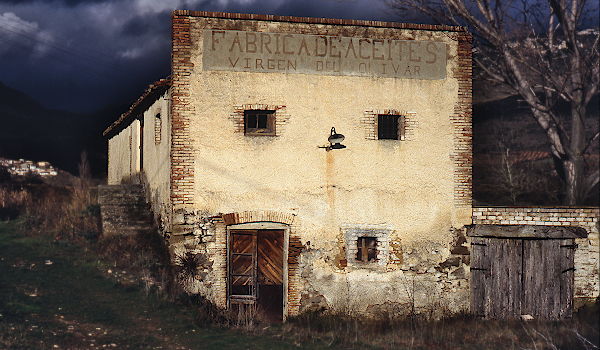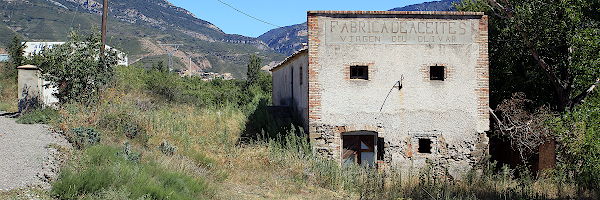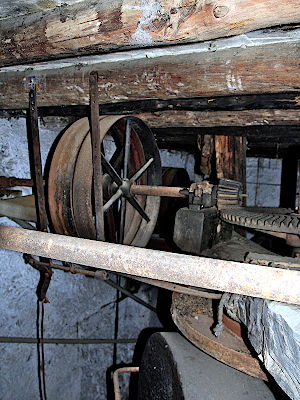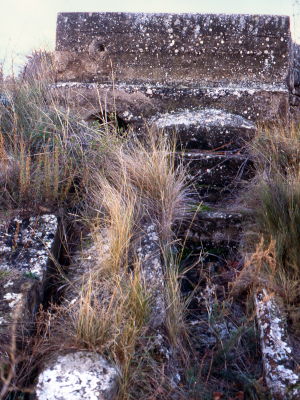Path: Introduction -
Visit the mills; catalogue - Arascués - oil mill

Mills in Altoaragón - aceitero
Arascués

Arascués lies on the main road from Huesca
to Sabiñánigo and Jaca at the foot of the . Arascués is part of Nueno nowadays.
There have been major road works in the vicinity and the situation on the
terrain has become a mess. It may be best to approach from the South via the
and take exit 372 (Arascués, N330, Nueno). Turn right at the roundabout and then immediately
left into a narrow road. After about 400 m you will find the mill next to the road.
Pictures: 31.XII.1995, 14.VIII.2014







